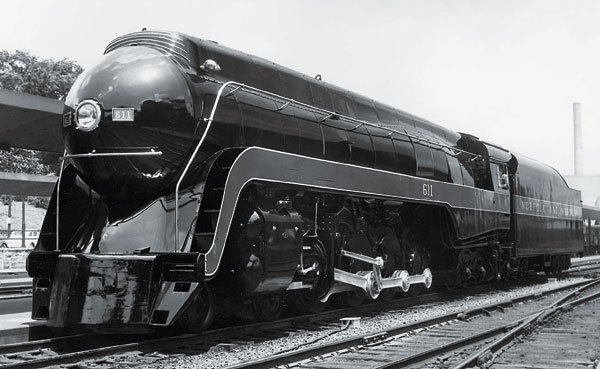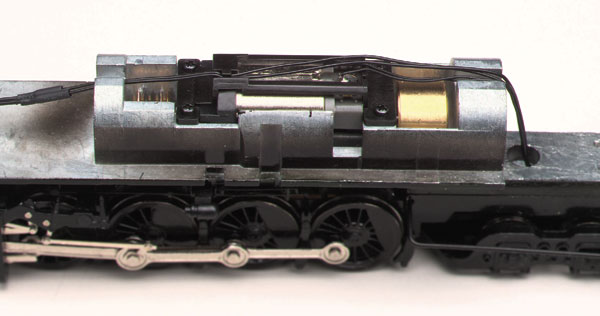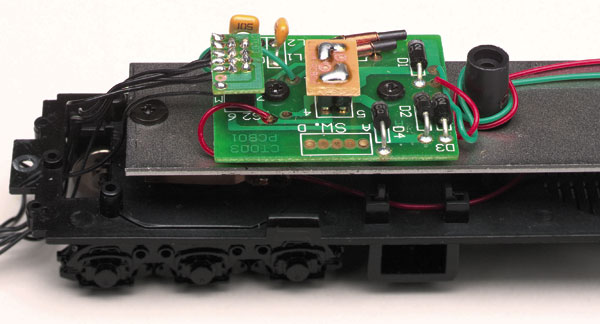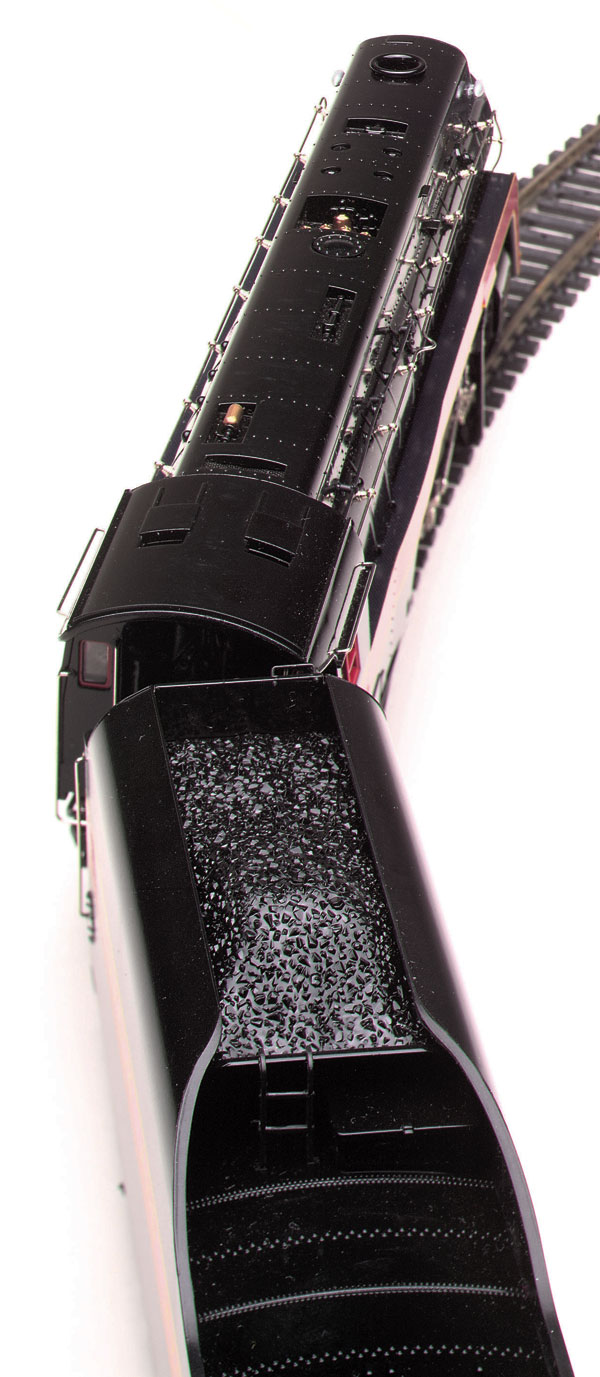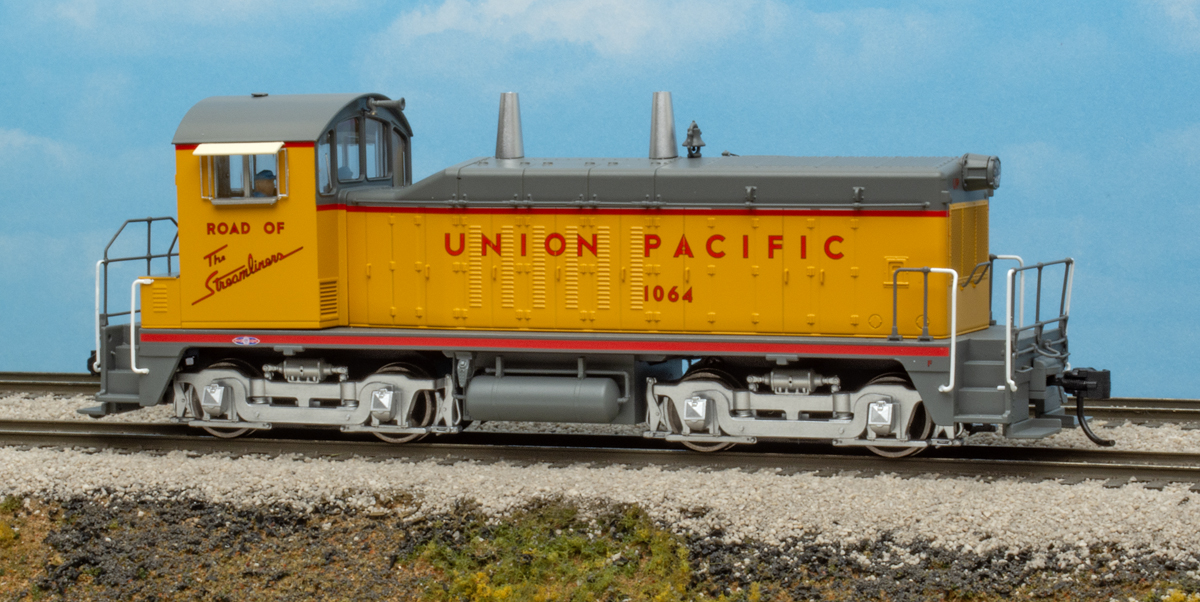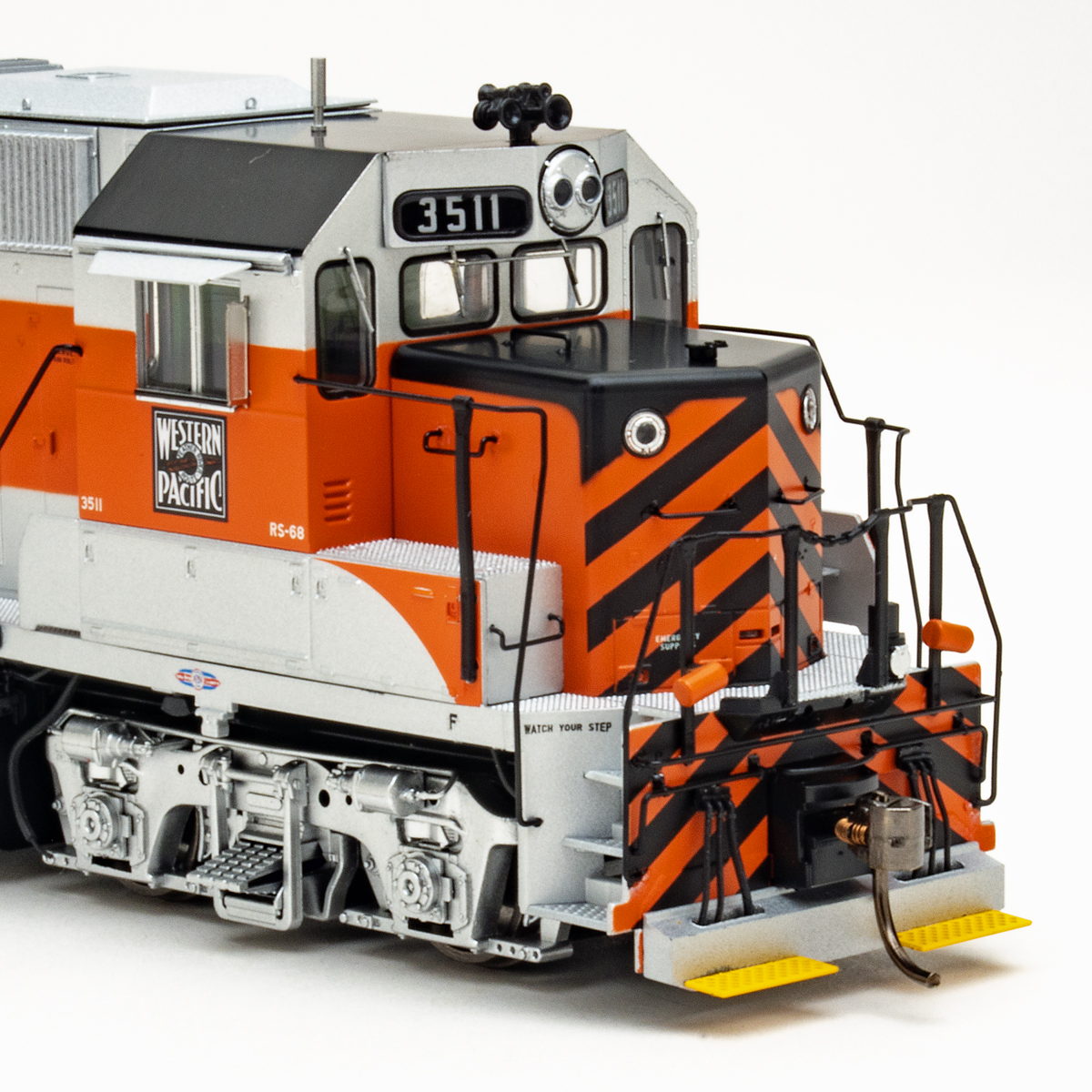The N&W built its first five streamlined 4-8-4 passenger locomotives in its own Roanoke (Va.) Shops in 1941. Designated class J and numbered 600 through 604, they represented the best thinking of one of the leading steam locomotive engineering staffs.
In 1943 the N&W built six additional unstreamlined 4-8-4s (605-610), which had wider side rods due to wartime shortages of lightweight steel alloys. By the end of 1945, the railroad added streamlining and installed lighter-alloy rods so these engines also joined class J.
Finally three more Js, 611-613, were built in 1950, the last of their wheel arrangement constructed for a U. S. railroad. These engines carried 300psi steam pressure and developed the greatest rated main cylinder tractive effort, 80,000 pounds, of any 4-8-4.
The ready-to-run model is mostly plastic with a metal chassis and boiler weight, and metal pilot and trailer trucks. The paint on the model of no. 611 is glossy to represent the engine either freshly shopped or in fantrip service; Bachmann offers no. 610 in a matte finish. All the engine and tender wheels are painted black out to the circumference of their tires, which greatly adds to the realism of the model.
The model’s rods are noteworthy, not only for representing the big crank hubs of the lightweight roller-bearing design, but for including the double rods between the second and third drivers on each side. This represents the prototype’s “extended main rod,” which divided the enormous thrust of the pistons between the crankpins on the second and third driving wheels.
The locomotive and tender are accurate to within an inch or two of most major dimensions, and the proportions of the locomotive’s bullet nose and skyline casing look right. The running board skirts bulge out authentically around the front of the large firebox, a feature that hasn’t always been captured even on brass models. All of the wheels except the drivers are exactly the right diameter, and the drivers are only a scale ½” shy of the real thing’s 70″.
On the other hand, the detailing under the running boards and cab is greatly simplified. The injector and feedwater pump are pretty crudely represented, as are the power reverse and dynamo. I don’t find that this detracts as much from this streamliner as it would from a conventional steamer.
As it is, the Spectrum model accurately represents the last Js built, with solid pilot wheels, alligator crossheads, and square-backed tenders. The first five had multiple-bearing crossheads hung from single guides, and the first 11 had spoked pilot wheels and round-topped rear tender walls. Engine 604 was built with a Franklin booster engine on the trailing truck, although it was eventually removed.
The motor and flywheel are surrounded in a die-cast mounting above the rear drivers and power the main drivers through a worm and gear tower. Although there’s plenty of room inside the engine’s superstructure, the circuit board controlling the directional lights and carrying the Digital Command Control socket is housed in the tender.
The locomotive picks up current from all eight drivers and from the front and rear wheels on each side of each tender truck. All engine and tender wheelsets were in gauge, and their flanges matched the National Model Railroad Association’s RP25 contour. The E-Z Mate magnetic knuckle coupler on the tender matched the Kadee no. 205 coupler height gauge.
The Spectrum J runs smoothly and quietly throughout its speed range. Its slow speed is excellent, and its 12-volt speed is fine for model railroads even if not up to the 110 mph no. 610 recorded in a 1944 test run. The drawbar pull is the equivalent of ten to 12 free-rolling passenger cars on straight, level track. There’s ample room to add weight for increased traction, but the locomotive must still be able to slip its drivers under a heavy load.
The engine and tender are coupled with a variable drawbar which keeps them close-coupled on straight track and spreads them out on curves. This excellent feature has been used on European locomotive and passenger car models but is rarely seen in this country.
The Bachmann Spectrum J is a convincing replica of a doubly famous prototype: first as an outstanding example of steam locomotion, and later as a powerful reminder of the steam era. I expect this will be a popular model even beyond the followers of the Norfolk & Western.
Price: $165
Manufacturer:
Bachmann Industries
1400 E. Erie Ave.
Philadelphia, PA 19124
215-533-1600
www.bachmanntrains.com
Description:
Plastic and metal ready-to-run steam locomotive
Features:
Directional headlights
DCC decoder socket
Drawbar pull: 1.7 ounces
Engine and tender weight: 25 ounces
(19 ounces for engine alone)
Flywheel on motor shaft
16-wheel electrical pickup
Magnetic knuckle coupler on tender
Minimum radius: 22″
Variable length drawbar






